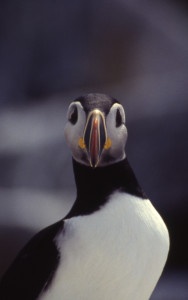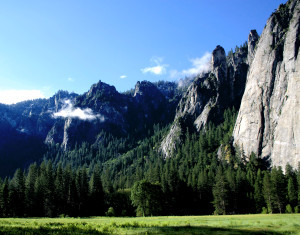We have much more to do and your continued support is needed now more than ever.
What the Government Shutdown Means for Wildlife
As of midnight last night, after the failure of Congress to pass a continuing resolution to fund the government, the government has officially shutdown. What does this mean for conservation? We don’t know exactly what will happen. But, based on what has occurred during past government shutdowns and contingency plans released by federal agencies, we have a pretty decent idea.
It’s a good day for carbon pollution
Remember that great rule to limit carbon pollution from power plants? The Environmental Protection Agency (EPA) is currently working on that, along with several other critical rules and regulations, including one to and one to clarify the scope of the Clean Water Act. Unfortunately for the complex rule-making process, the EPA essentially closes its doors during government shutdowns. Only 1,069 of its 16,205 employees will be kept working during the shutdown, meaning that these and other important rules could be delayed.
It’s a bad time to try to restore endangered species populations
The U.S. Fish and Wildlife Service is responsible for implementing and enforcing some of our Nation’s most important environmental laws, including the Endangered Species Act. During the shutdown, no permitting work or consultations regarding these regulations will go forward, stopping promising conservation work in its tracks.

It’s an even worse time to be a hiker
Or a hunter, angler, bird watcher, mountain biker, or anyone else who takes advantage of our public lands. Last time the government shutdown, in 1995, the National Park Service closed 368 sites, including Yosemite National Park. About 7 million visitors to public lands were turned away, and local communities near national parks lost an estimated $14.2 million per day in tourism revenues. This time around, the Department of the Interior will furlough 81% of its employees, heavily restrict public access at all public lands, and close all 561 National Wildlife Refuges along with 394 National Parks. All educational services and visitors’ centers will be closed.

And things aren’t looking too great for clean energy
The Department of Energy will stop all work on new renewable energy activities, including permitting applications and regulatory submittals. This means that no new renewable energy projects will move forward during the shutdown. And ARPA-E, the program that funds research and development of advanced energy technologies, would shut down completely.
A government shutdown is irresponsible, wasteful, and environmentally damaging
Thanks to the Budget Control Act of 2011 and sequestration, government spending is already cut by $1.2 trillion over the next 8 years. These cuts have federal agencies struggling to maintain services at national parks, enforce environmental regulations, protect endangered species, and help our nation transition to clean energy. Shutting down the government adds insult to injury and places an unreasonable strain on agencies that are already stretched too thin. And the money need to reopen the government—the 1995 shutdown cost an estimated $1.4 billion—is money that otherwise could be used for critical conservation programs.
A government shutdown is horrible news for everyone, including Americans everywhere who value clean air and water, clean energy innovation, access to public lands, and wildlife habitat restoration.
![]() Tell your member of Congress that they need to pass a funding bill so that vital wildlife conservation, environmental protection and many other vital services can continue.
Tell your member of Congress that they need to pass a funding bill so that vital wildlife conservation, environmental protection and many other vital services can continue.





















